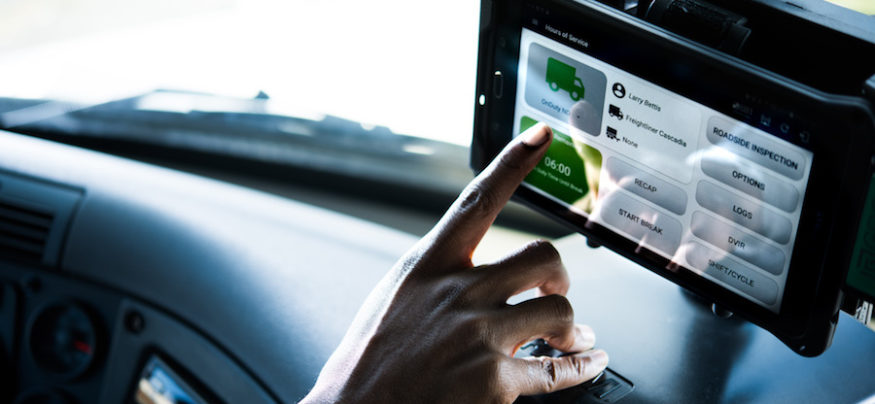As a small, family-owned waste disposal company, Daily Disposal has always relied on pen and paper to document routes and manage customer accounts. But as the company began to grow, it became apparent that a more efficient way to route trucks and document trash pickup was needed.
With the help of dashboard-mounted tablets, smartphones and mobile apps, Daily Disposal was able to significantly increase efficiency and save money.
Daily Disposal is just one small transportation and logistics company reaping the benefits of mobile transportation technology. They understood that the right mobile devices and applications make all the difference, by helping to keep drivers safe, ensuring compliance, enabling vehicle monitoring to prevent problems, tracking location and driving down cost per mile.
To achieve these benefits, transportation businesses should begin with the devices themselves. Choosing rugged devices, such as the Galaxy Tab Active2, with a durable design built to withstand road vibrations and bumps is a good start. To ensure stability, also consider a rugged mounting system with Global Distribution System (GDS) connectivity. This combination keeps devices secure while connected to power and maintaining continuous data communications.
Also important is the device’s GPS capability, which is critical for vehicle tracking, as well as a robust defense-grade security platform to ensure that customer and business data remain secure at all times.
Fleet Software Improves Productivity
For transportation and logistics companies, much of the benefit comes from software, generally in the form of fleet telematics and fleet management solutions. These types of solutions are more important than ever, since they can help companies comply with the Electronic Logging Device (ELD) mandate. This rule requires commercial trucks in long-haul service to electronically record driving times and Hours of Service data on a device connected to the vehicle’s engine.
This device can be a smartphone or tablet. One report found that nearly three-quarters of fleets are either currently using telematics or plan to do so in the next year. Of those implementing new technologies, 41 percent said they were doing it to increase regulatory compliance.
Unlock the Power of Mobility for SMBs
Get your free guide to improving security and enhancing productivity with unlocked smartphones. Download Now
But there more advantages than simple compliance to upgrading your telematics solution. According to Frost & Sullivan, fleet operators often see increases of up to 15 percent in productivity after implementing these technologies — as well as reduction of up to 25 percent in total miles driven; up to 30 minutes per day in driver labor savings; a 30 percent reduction in vehicle idle time; and fuel cost reductions of as much as 25 percent.
Some of the most important features to look for in fleet telematics and fleet management include:
Capturing and analyzing driver and vehicle data: If you can track information on speeding, rapid acceleration, idling and harsh braking, you’ll be able to work with drivers to improve these issues. Not only does this enhance driver safety, but it can significantly advance fuel efficiency. These savings can definitely add up — according to the American Transportation Research Institute, fuel accounts for up to 40 percent of fleet operation costs. In addition, by tracking the location of drivers at all times, companies can improve customer service.
Monitoring vehicle diagnostics: Fleet management software can significantly improve vehicle maintenance by monitoring diagnostics and performance on a continual basis. This information can be instrumental in understanding when vehicles may require maintenance. In addition to helping avoid a catastrophic event on the road, tracking this data enables pre-emptive maintenance and promotes efficient scheduling.
Fleet-optimized routing: With this capability, drivers can add or remove stops, navigate around heavy traffic and accidents, and create efficient routes that reduce driving time and improve customer service — making life easier for drivers, and deliveries more timely for customers.
Equipping drivers’ devices with fleet telematics capabilities can dramatically improve everything from productivity to vehicle safety, especially for small fleets and owner operators, which comprise the vast majority of North American trucking carriers.
Get our free roadmap to the future of fleet management to learn more about how to transform the way you manage your fleet, increase efficiency and better retain drivers.









